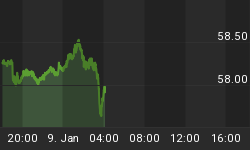A "dot plot" of Fed-expected rate hikes vs. market-expected rate hikes shows convergence towards the market's view.
In December, Fed Chair Janet Yellen expected four rate hikes this year. So did various Fed governors.
On March 21, Atlanta Fed president Dennis Lockhart went out on a limb by proposing a hike in April. The market slapped him silly.
For my take on Lockhart's position, please see GDPNow Forecast Plunges to +0.6%; Tracking Lockhart's Momentum with Pictures.
Following weak economic reports and Yellen's speech yesterday, the "dot plot" of expected hikes further converged.
Wall Street is clearly happy with that change. But is it a good thing for the Fed to outsource policy to market expectations?
Market Rallies Around Dovish Fed
I commented yesterday on the market's reaction to Yellen's speech. Today mainstream media is on the case.
Reuters reports Wall St. Rallies as Fears of Imminent Rate Hike Fade.
Yellen, in her first remarks since the Fed held steady on rates earlier this month, said inflation in the United States had not yet reached sustainable levels amid uncertainty about China's economy and low oil prices.
Yellen's stance contrasts with recent comments from other policymakers who have voiced support for more than one increase this year.
Markets around the world cheered Yellen's remarks, which suggested that a rate hike was not immediately on the horizon. The dollar fell more than a percent, while bond prices rallied.
Yellen Outsources U.S. Monetary Policy to the Financial Markets
Bloomberg reports Yellen Outsources U.S. Monetary Policy to the Financial Markets.
The Federal Reserve looks to have outsourced monetary policy to the financial markets -- and that may not necessarily be bad.
Fed Chair Janet Yellen told the Economic Club of New York on Tuesday that policy makers had scaled back the number of interest rate increases they expect to carry out this year after investors did the same.
"That's a good thing," said Lou Crandall, chief economist at Wrightson ICAP LLC in Jersey City, New Jersey, commenting on the sequence of actions. "Monetary medicine gets into the blood stream faster if the public can anticipate what the Fed's response to an economic shock will be."
"The risk is that markets' perception of such continued accommodation will embolden them even more to try to force the policy hand of the Fed," Mohamed El-Erian, chief economic adviser at Allianz SE and a Bloomberg View columnist, said in an e-mail.
Indeed, investors in the federal funds market are betting that the central bank will raise rates just once this year, not the two times policy makers envisage.
'Ideal World'
It's an "ideal world" when central bankers and financial market participants are in an sync on how monetary policy should respond to incoming economic data, said Michael Feroli, chief U.S. economist at JPMorgan Chase & Co. in New York. In that case, "the expected path of policy rates should adjust before even the Fed moves."
Unfortunately, "we haven't gotten to that point," Feroli added -- in spite of Yellen's embrace of the market's latest moves in her speech.
Dot Plot Convergence

Deciphering the Dove
Former Dallas Fed Richard Fisher was on CNBC this morning discussing the dot plot.
"The central bank is living in constant fear of market reaction and that is not the way to manage policy," said Fisher.
I picked up that video from ZeroHedge who commented Former Fed President: "Living In Constant Fear Of Market Reaction Is Not How You Manage Central Bank Policy".
Yellen Yap Further Discussion
- Yellen Gets Lovey-Dovey in Speech Citing "Other Tools" and More QE
- Measuring the Effect of Yellen Yap: "Ooh wee baby, I sure show you a good time"
Rate Hike Odds September

'Ideal World' Rebuttal
Michael Feroli, chief U.S. economist at JPMorgan Chase says "In the ideal world, central bankers and financial market participants are in an sync on monetary policy."
Nonsense. In the "ideal world" central banks would not manipulate markets nor attempt to manipulate market opinions.
In fact, there would be no central banks at all in the "ideal world".
Proof is obvious: Look at the mess central banks have made with their asymmetrical, moral hazard policies, blowing bubble after bubble with increasing magnitude over time.
















